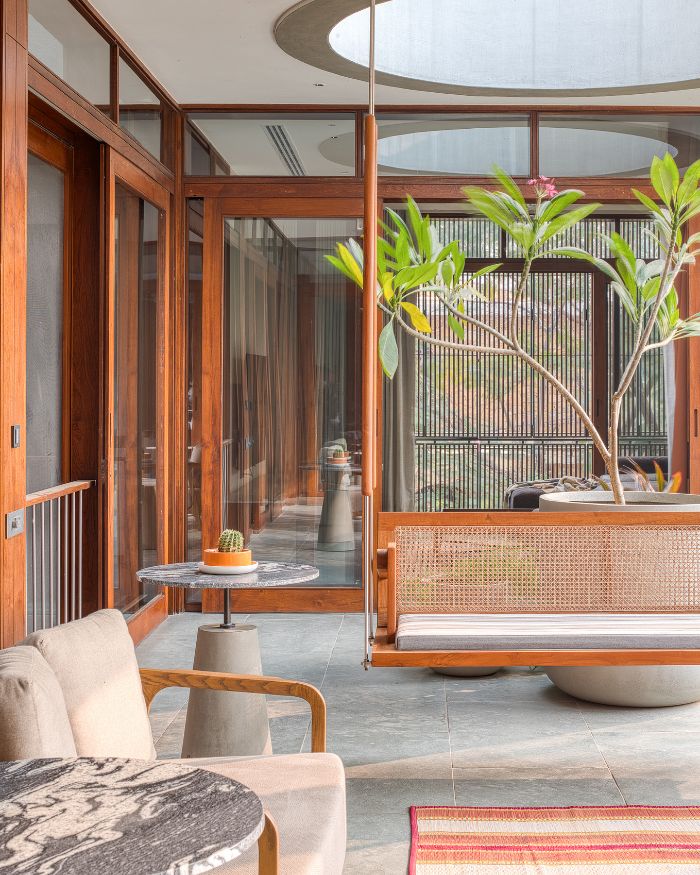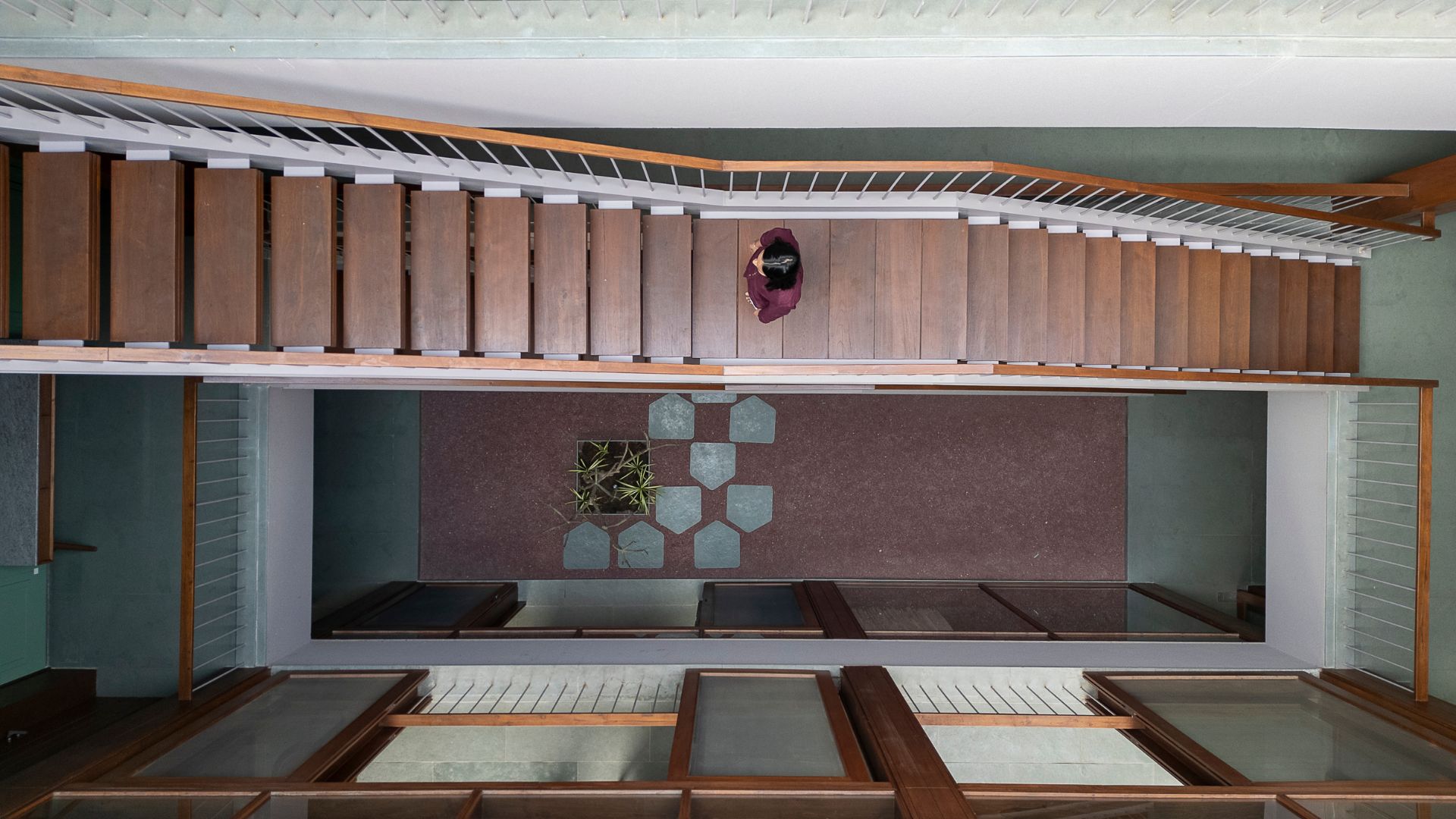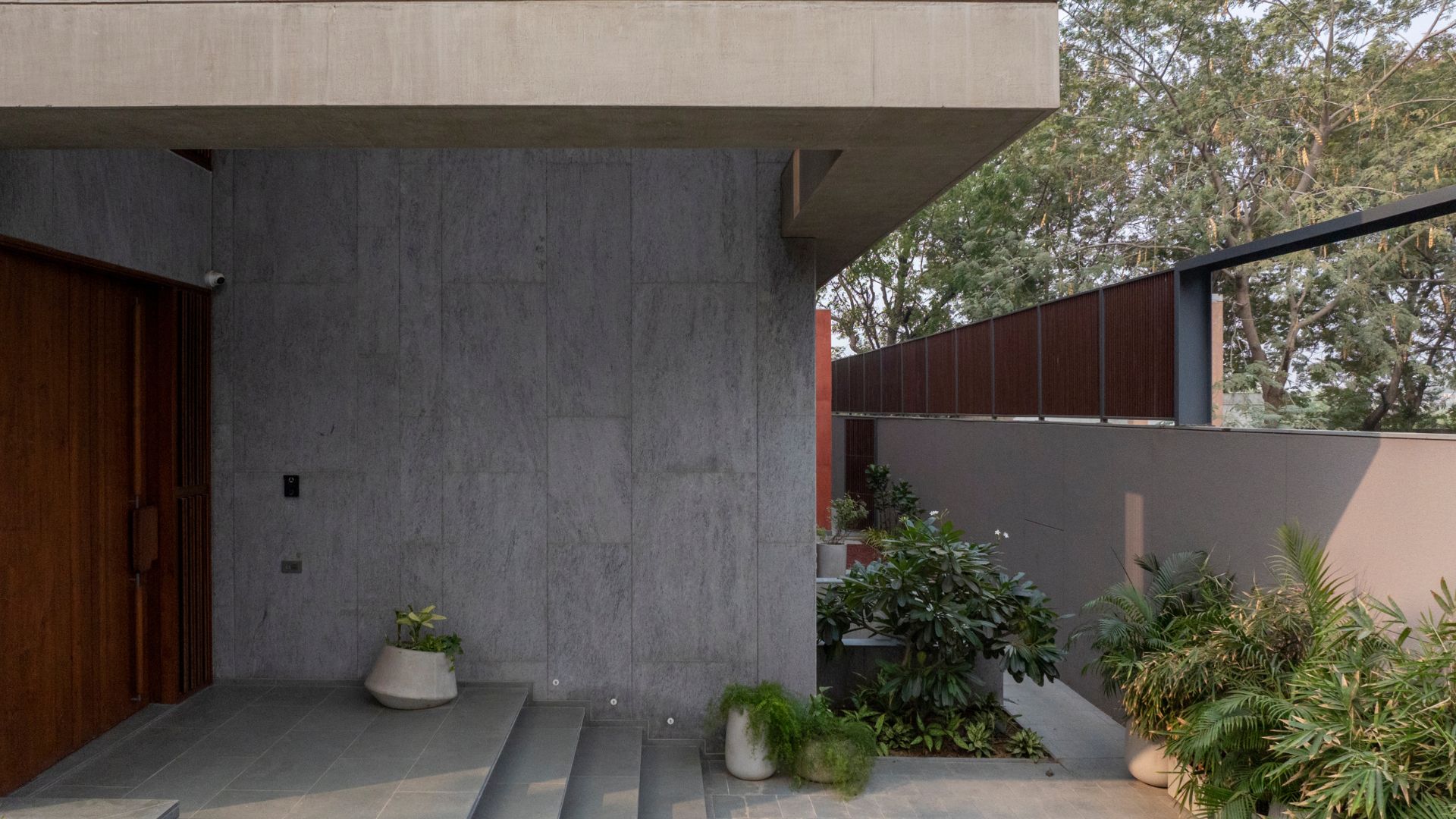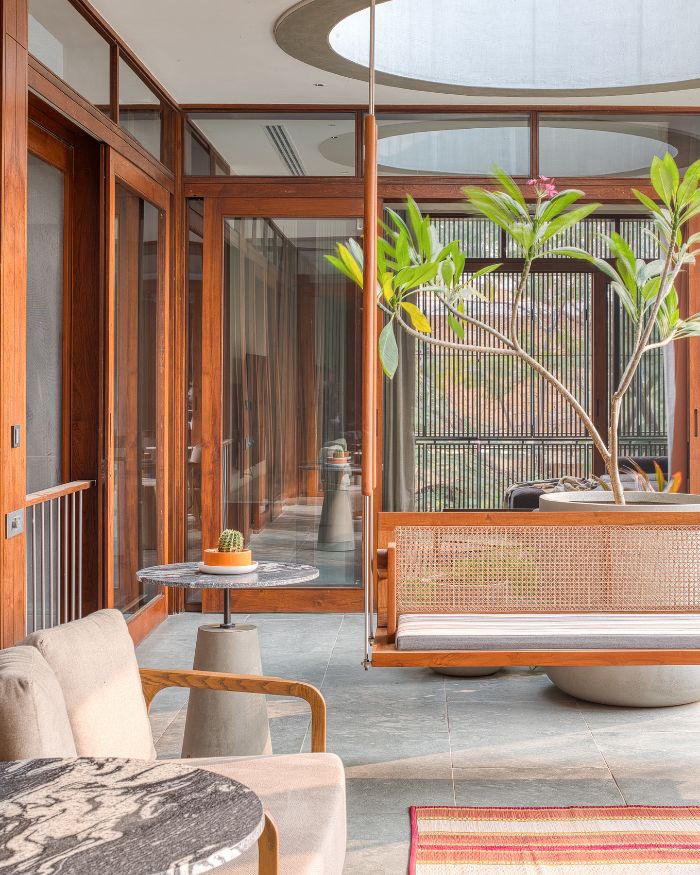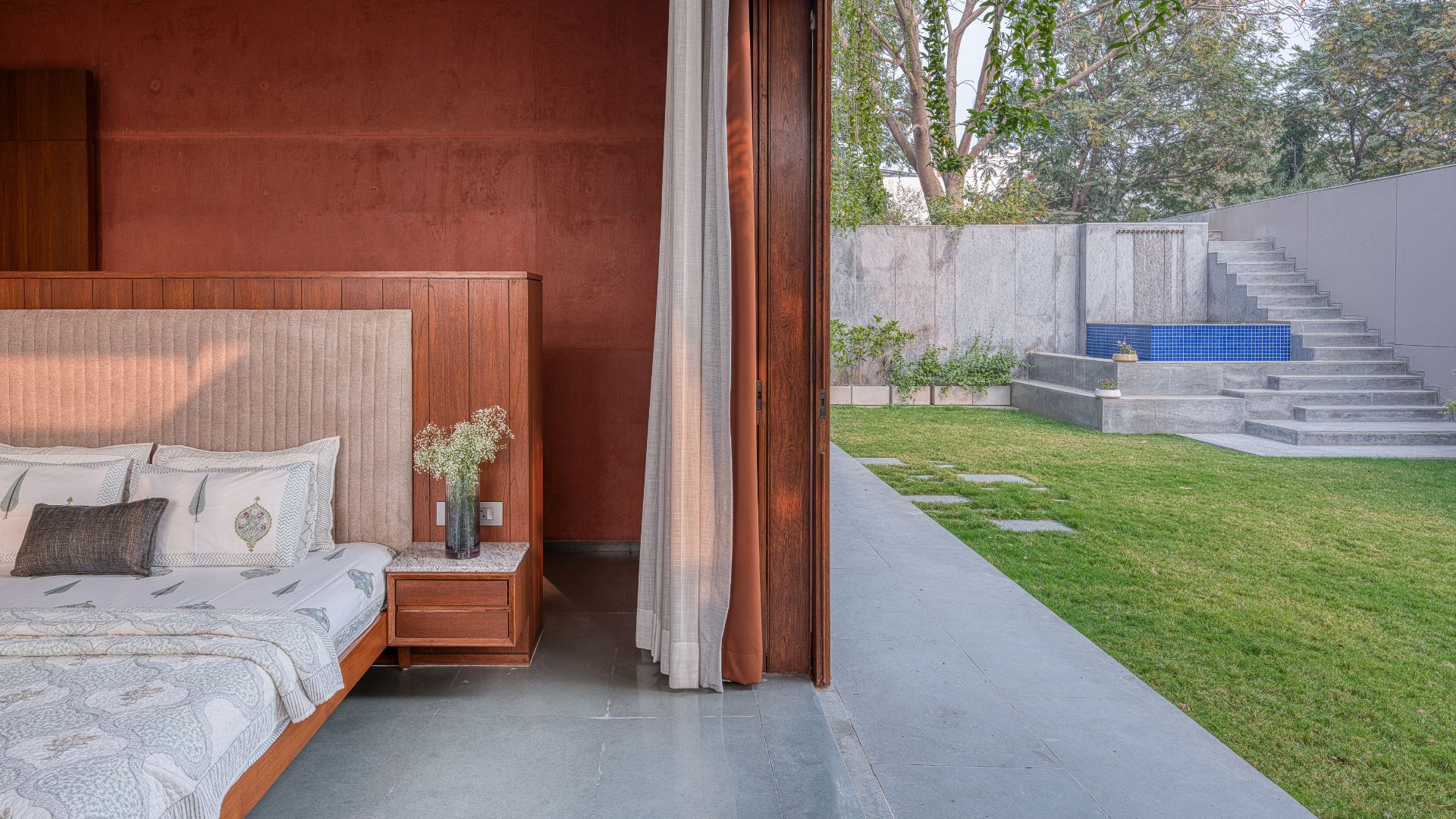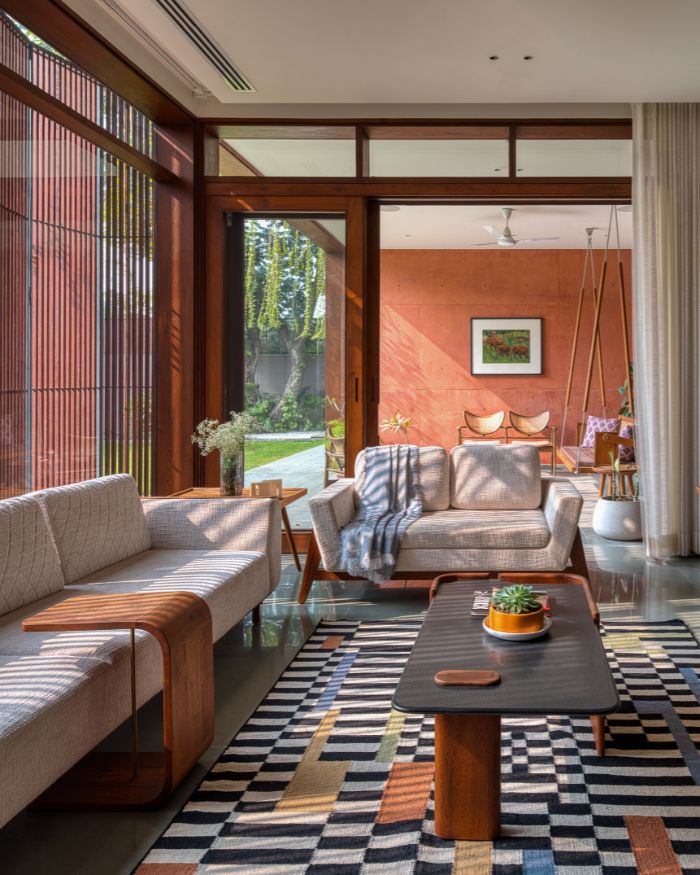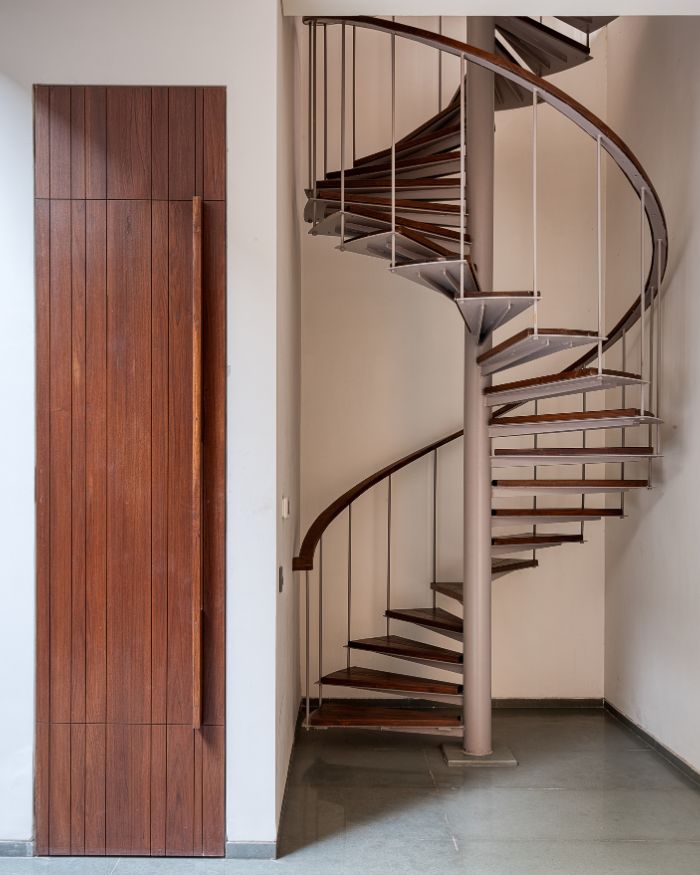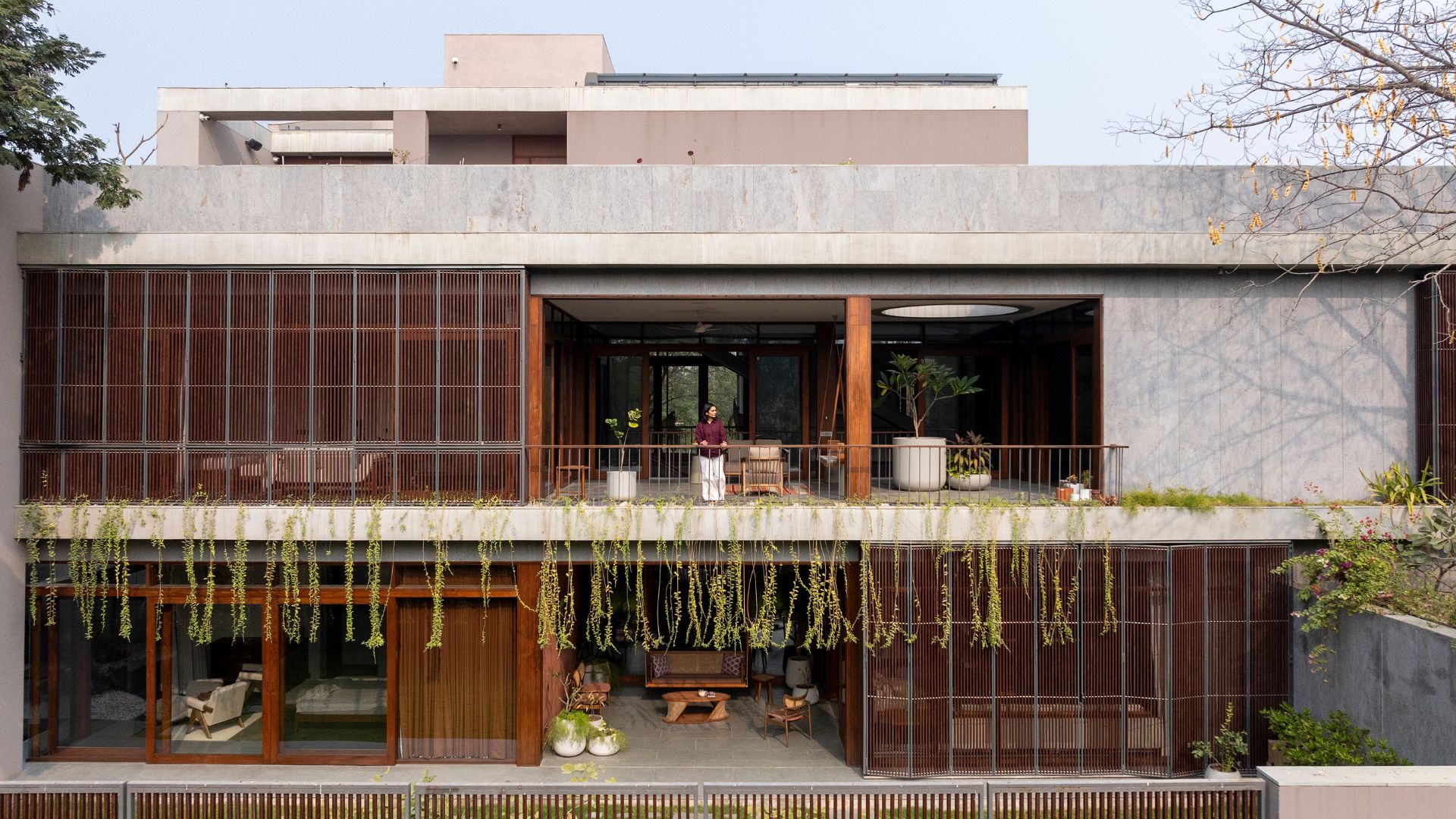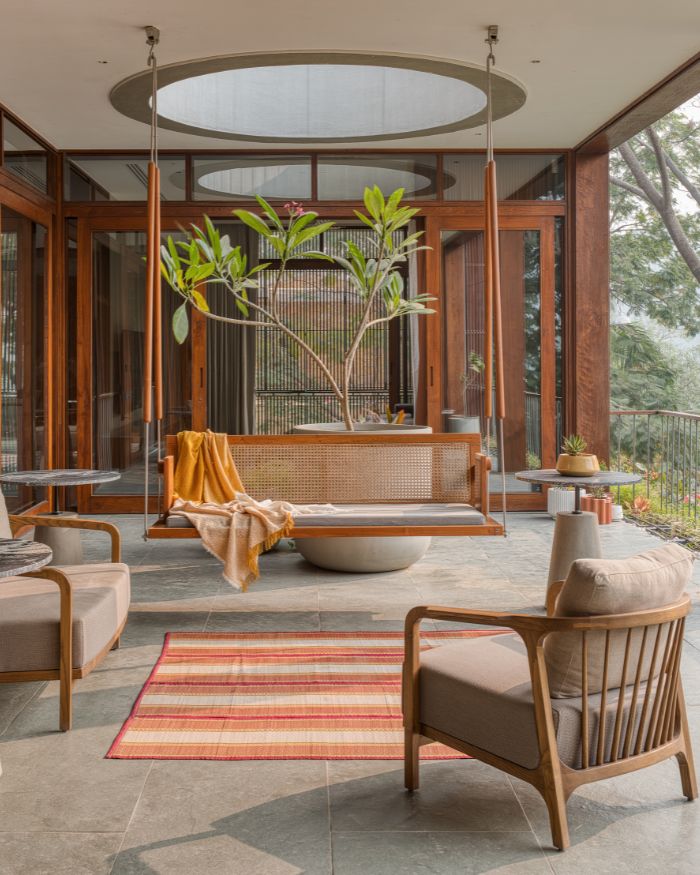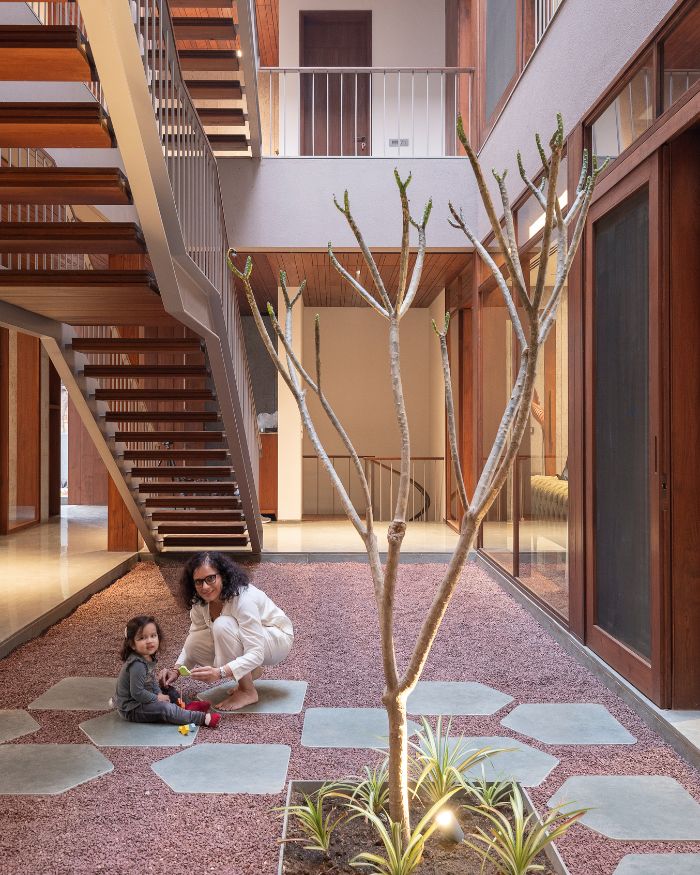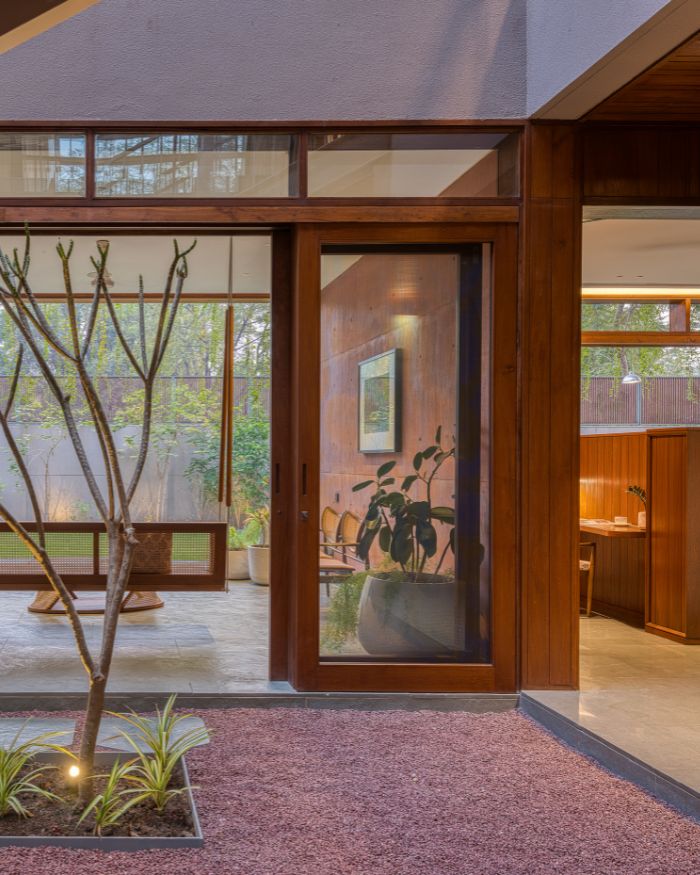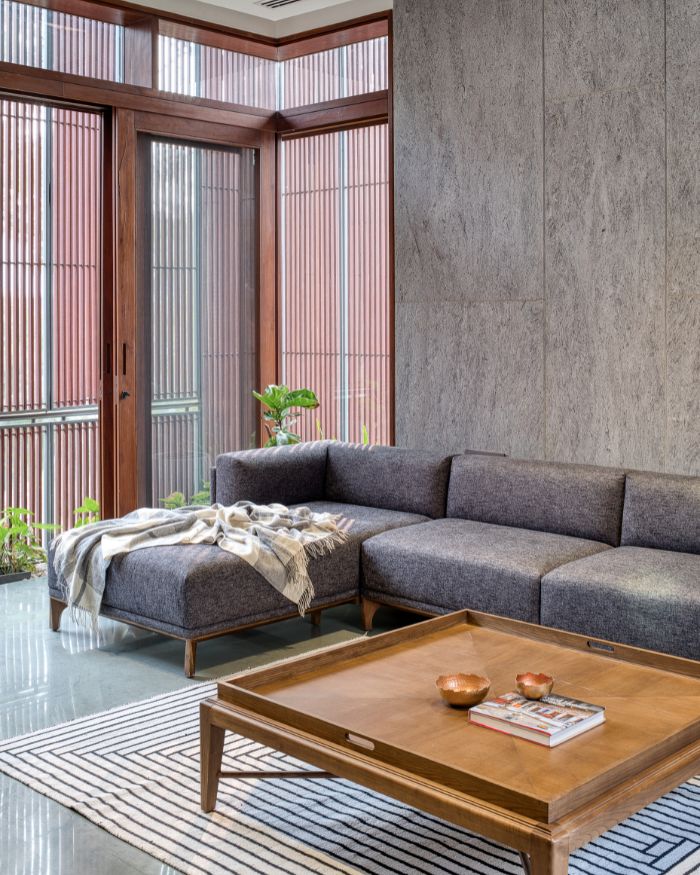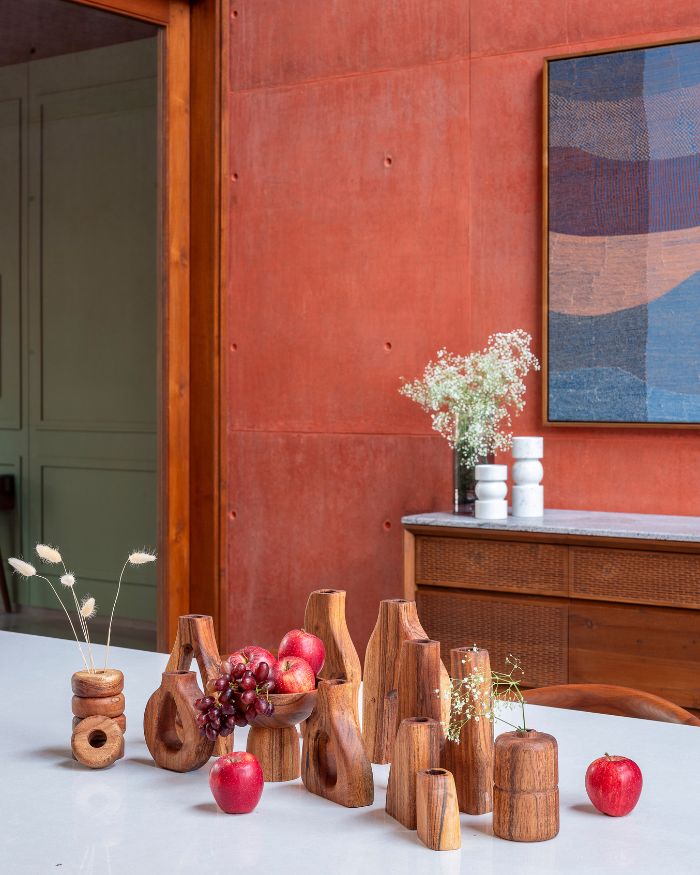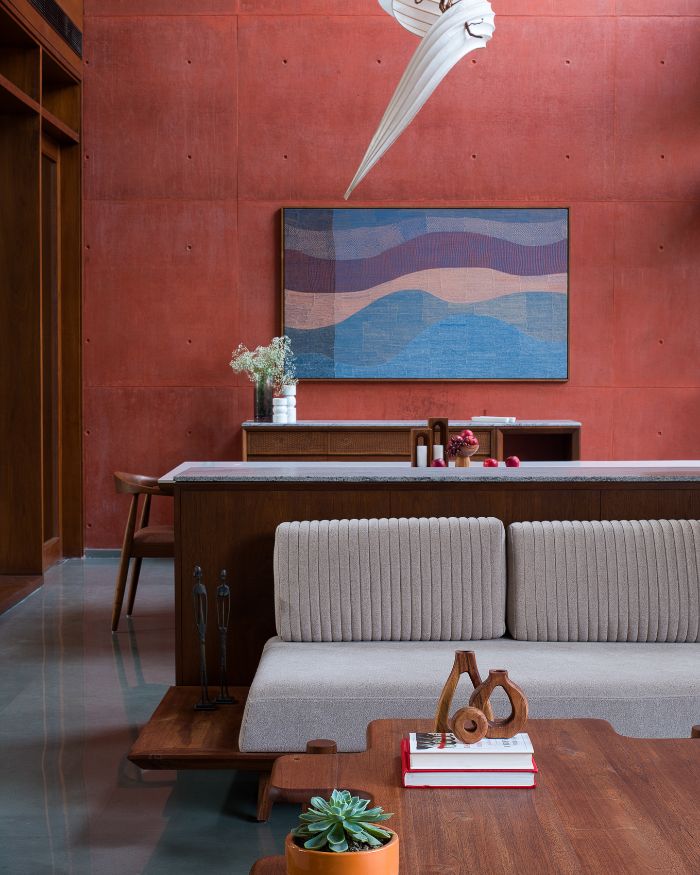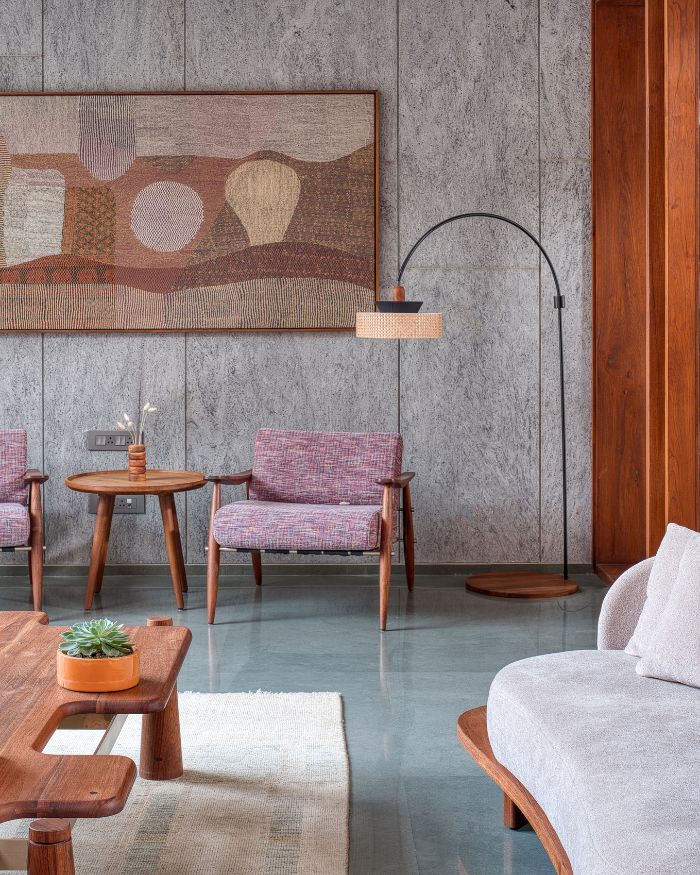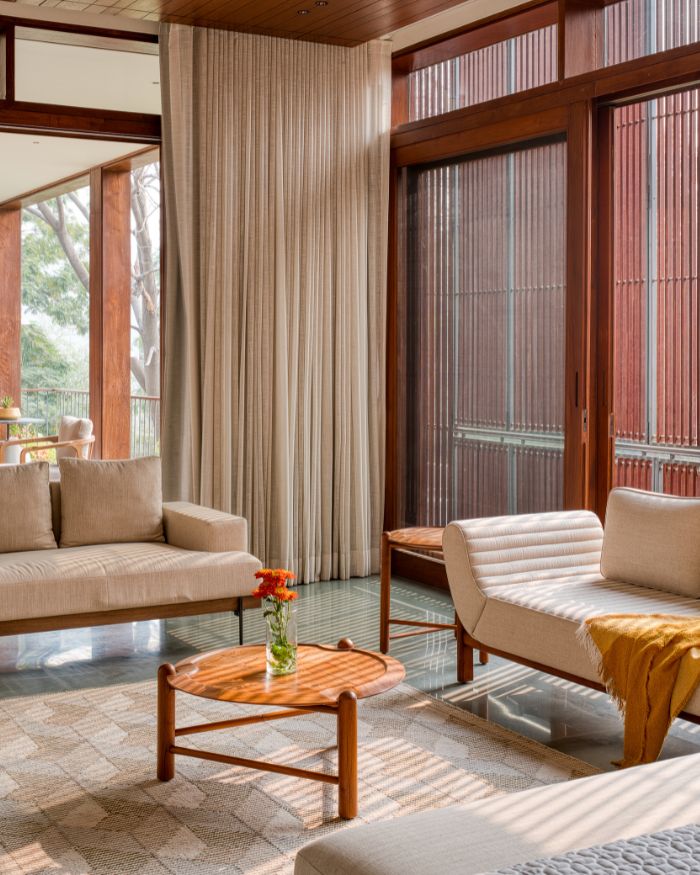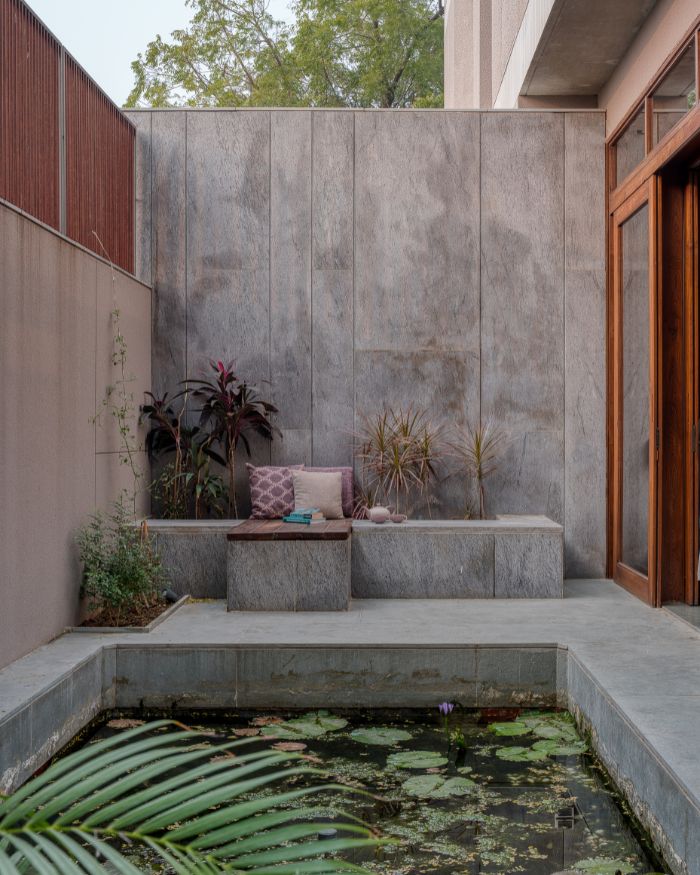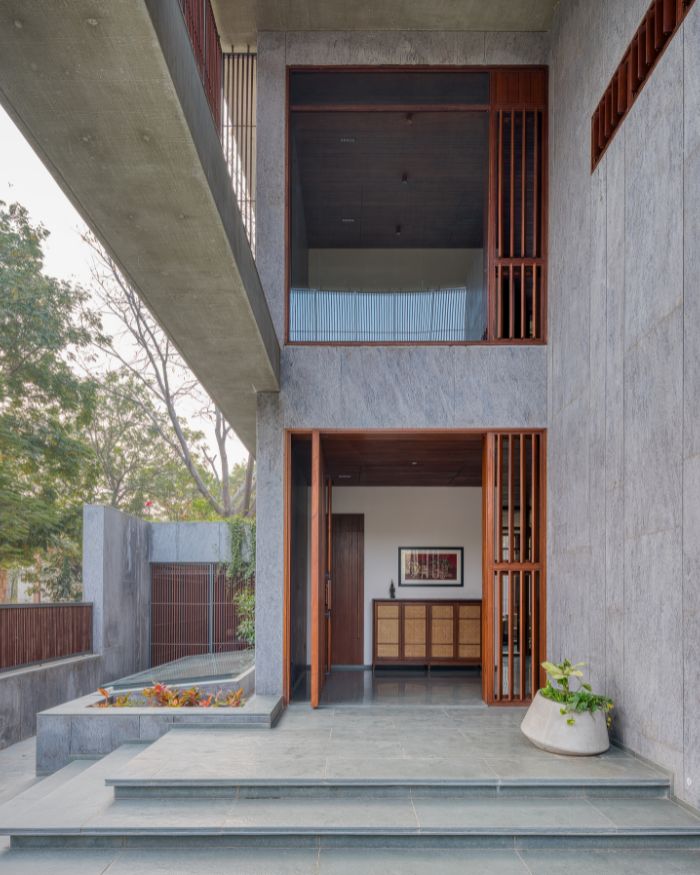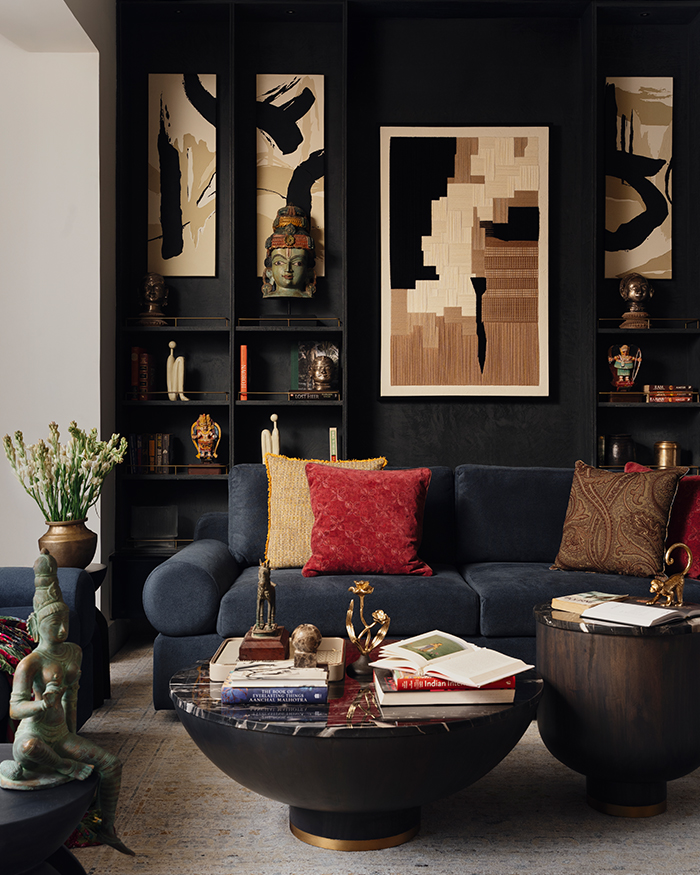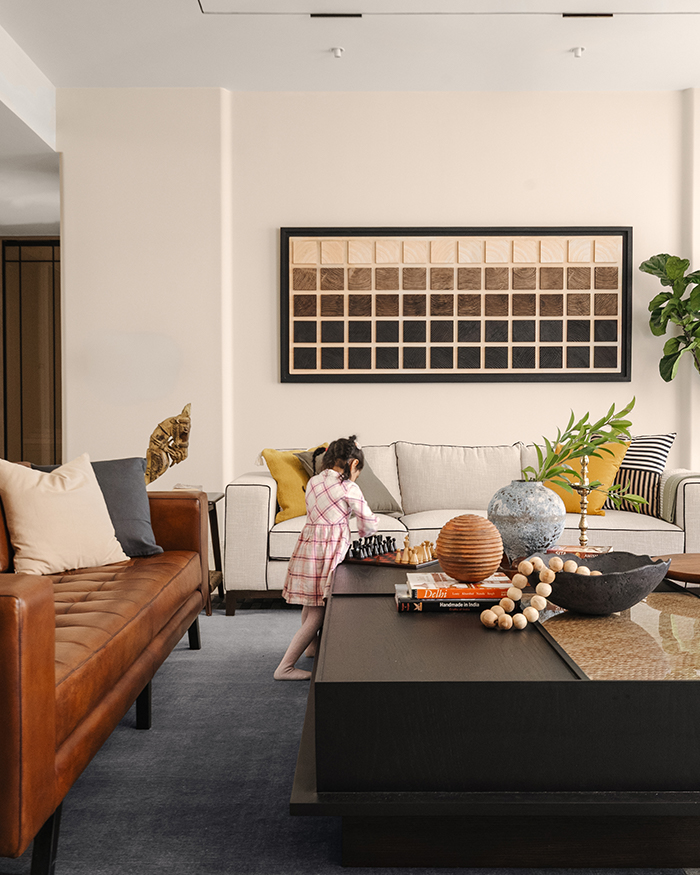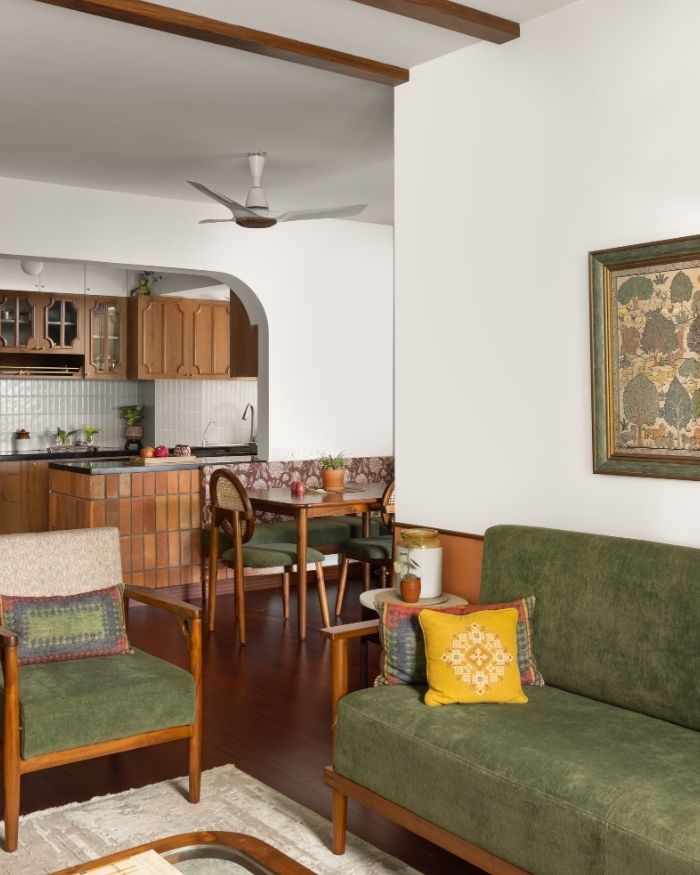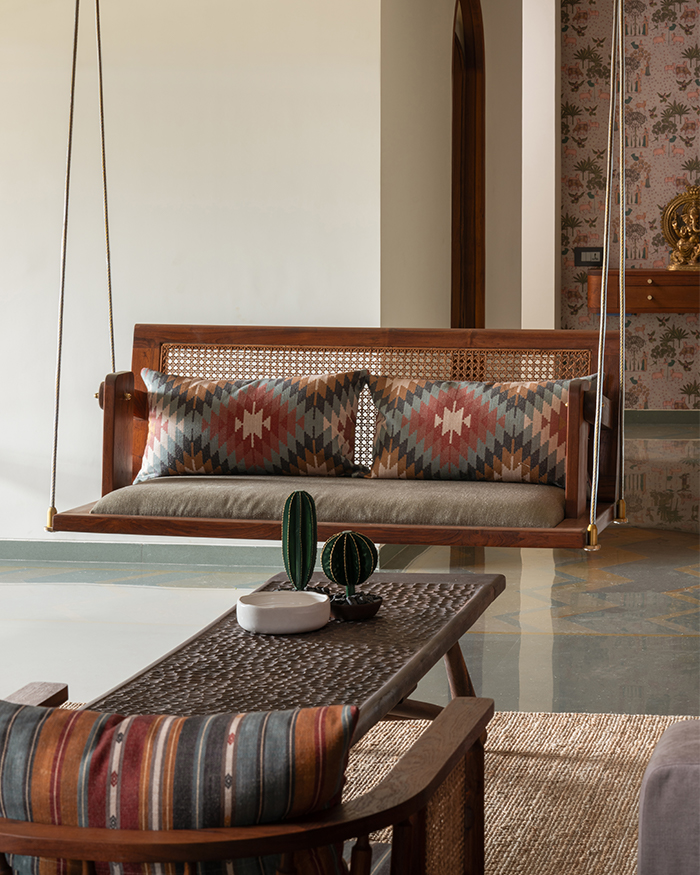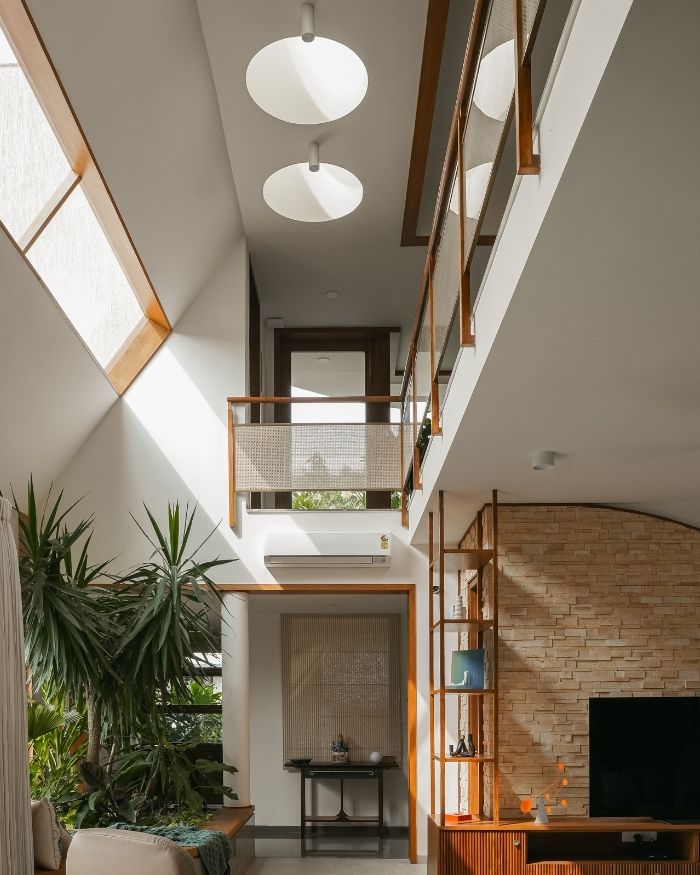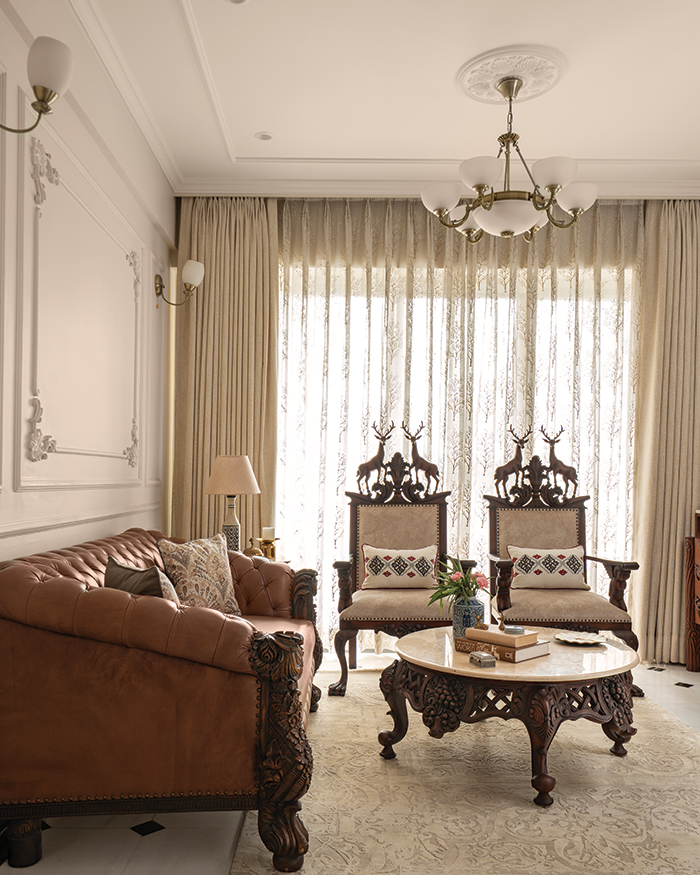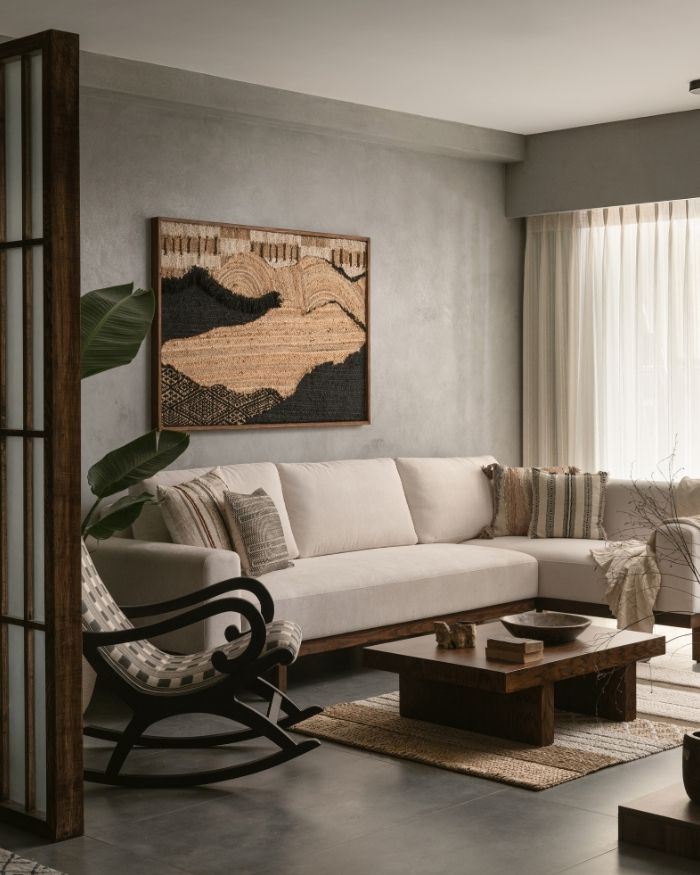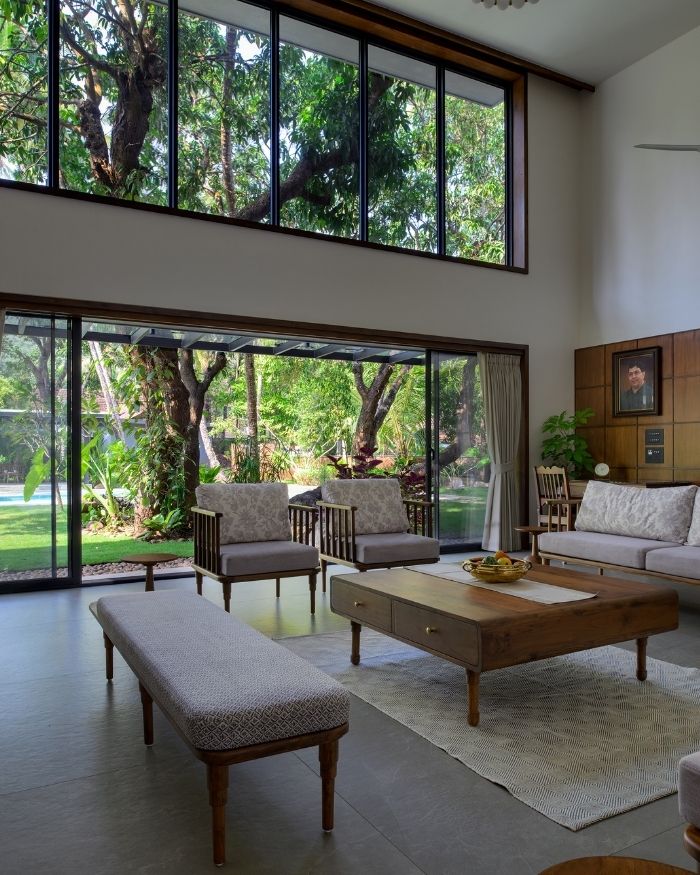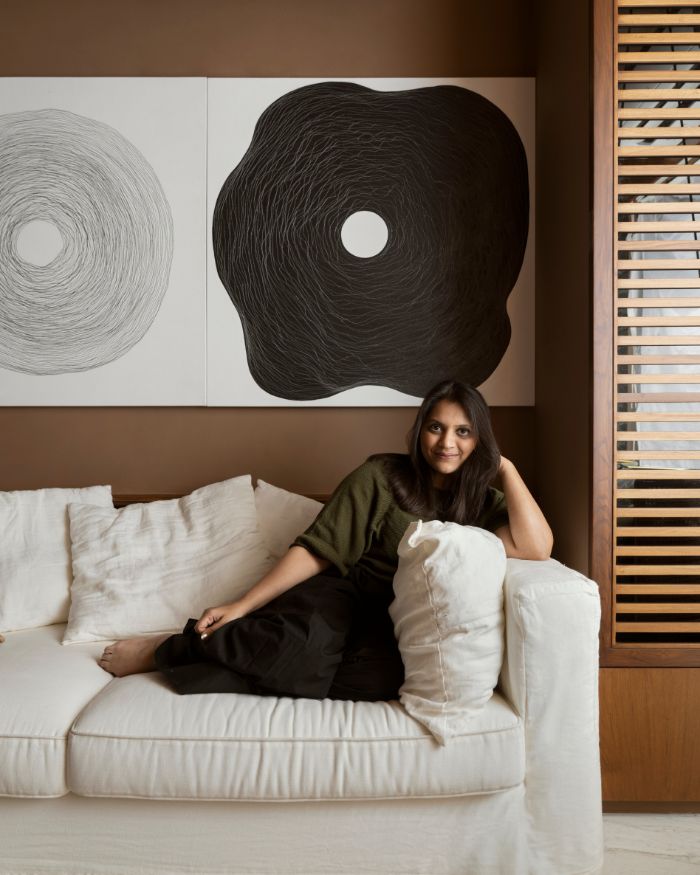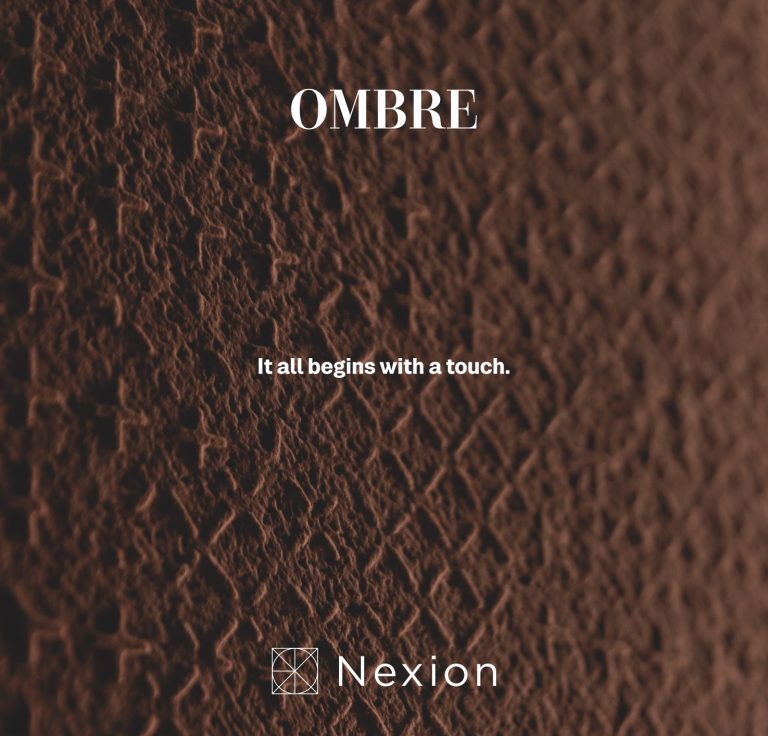When the camera glides across the Park family’s home in the 2019 Oscar-winning film Parasite, the location centred with a modern architectural facade takes focus, besides of course, the movie’s thought-provoking storyline. The home’s appearance — clean lines and open volumes — is a visual moment that lingered in the minds of a young Ahmedabad couple long after the film credits rolled. So much so that the homeowners made it the starting point of their 11,000 sq ft window to the skies.
Crafted by PVDRS in Ahmedabad, Gujarat, the couple came equipped with one clear brief: ‘A house similar to the one in Parasite.’ Not a replica, but a mood. A feeling. That sense of openness, lightness and understated drama. Led by founders Keyur Vadodaria, also Head of Architecture alongside Megha Patel-Vadodaria, also Head of Interior Design — the vision brought the Open House to life as it leans into modernism with flat roofs, sweeping glass panes, grey-toned walls and polished wood. But for the architects, the challenge was never to replicate the Parasite house — it was to use it as a springboard. Because where the Parasite house was cinematic, this one is deeply personal. Where it was minimalistic, this is rooted in culture, climate and quiet storytelling.
